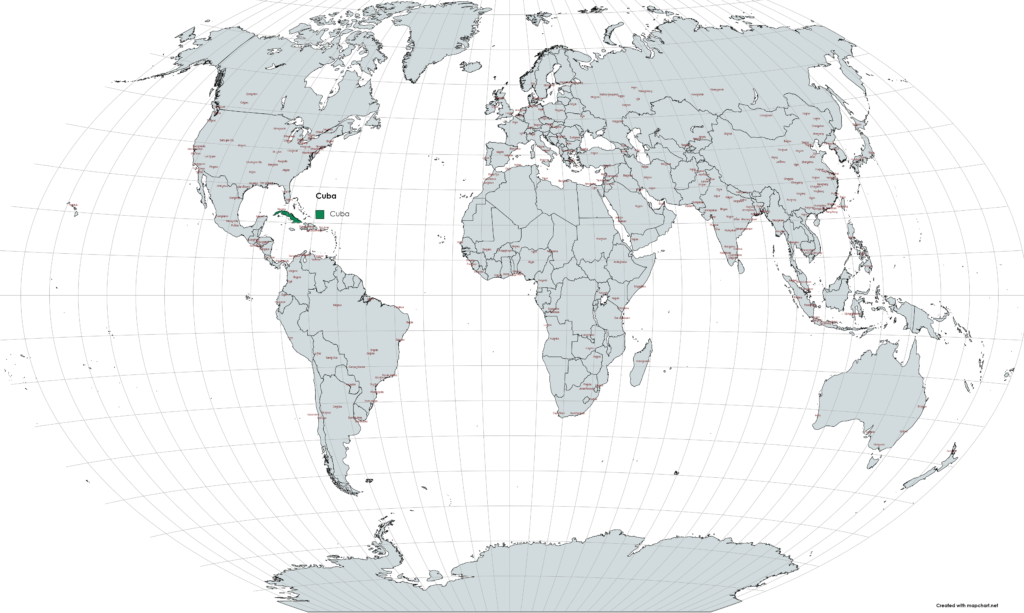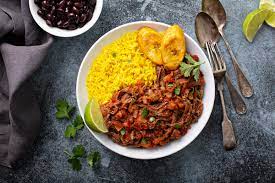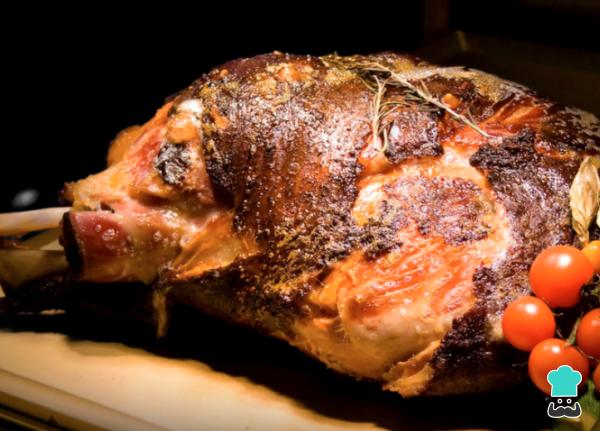Cuba travel tips
Cuba travel tips: Caribbean jewel with vibrant culture, historic architecture, pristine beaches, and classic cars, offering a captivating blend of past and present.
Provinces 🌎
Cuba travel tips. Here is a list of all the provinces of the Cuba.
Before you go 🛩
Important information you should know before your trip
Info

Capital | Havana
Flag Codes
ISO alpha-2 CU, ISO alpha-3 CUB
Currency
Badge | Cuban Peso
CODE | CUP
NUMBER | 192
SYMBOL | $
FRACTION | Penny
Mobile Coverage
Dialing Code | +53
SIM Card
Coverage
3G / 4G / 5G
Mobile Networks | Cubacel |

Location
Cuba is an island country located in the northern Caribbean Sea, at the confluence of the Caribbean Sea, the Gulf of Mexico, and the Atlantic Ocean. It is situated south of the United States and the state of Florida, east of Mexico’s Yucatán Peninsula, and west of Hispaniola, which is shared by Haiti and the Dominican Republic. The geographic coordinates of Cuba are approximately 21.5 degrees north latitude and 80 degrees west longitude. It is the largest island in the Caribbean, with a land area of around 109,884 square kilometers (42,426 square miles).
Currency
The currency of Cuba is the Cuban Peso (CUP). However, it’s important to note that Cuba has a dual currency system, which means they have two official currencies in circulation: the Cuban Peso (CUP) and the Cuban Convertible Peso (CUC).
The Cuban Peso (CUP) is the national currency primarily used by the local population for day-to-day transactions. It is also known as the “moneda nacional” or “national currency” and is the currency in which most goods and services are priced.
The Cuban Convertible Peso (CUC) was introduced in the 1990s as a convertible currency primarily used by tourists and for certain international transactions. The exchange rate between the CUC and the Cuban Peso (CUP) was initially set at 1:1, but there was a 10% surcharge applied when exchanging US dollars to CUC.
Languages
The official language of Cuba is Spanish. Spanish is spoken by the majority of the population and is used in government, education, media, and everyday communication. Cuban Spanish has its own unique characteristics and vocabulary influenced by African, indigenous, and Caribbean languages. However, it’s worth noting that other languages, such as English, are also spoken in some tourist areas and by individuals who have learned it as a second language.
Climate 🌡
Cuba has a tropical climate, specifically classified as a tropical savanna climate or a tropical monsoon climate. It is characterized by warm and humid conditions throughout the year, with relatively high temperatures and distinct wet and dry seasons.
The average temperature in Cuba ranges from around 21°C (70°F) in January to 27°C (81°F) in July. Coastal areas experience slightly milder temperatures due to the influence of sea breezes. The humidity is generally high, particularly during the wet season.
Cuba’s wet season typically lasts from May to October, coinciding with the Atlantic hurricane season. This period is characterized by heavy rainfall, occasional thunderstorms, and the possibility of hurricanes or tropical storms. The driest months are usually November through April, with less rainfall and more stable weather conditions.
The eastern part of Cuba tends to be wetter than the western regions, with areas such as the Sierra Maestra mountain range receiving the highest precipitation. The central and western parts of the island are relatively drier, with some areas experiencing a semi-arid climate.
Cuba travel tips
Here are some travel tips for visiting Cuba:
Weather:
Tropical climate; pack light, breathable clothing, sunscreen, and insect repellent. Hurricane season is June to November.
Accommodation:
Choose from casas particulares (homestays) for an authentic experience; book in advance during peak seasons.
Cuisine:
Savor local dishes like Ropa Vieja and Moros y Cristianos. Explore paladares (privately owned restaurants) for diverse flavors.
Art and Culture:
Explore Havana’s art scene; visit museums, theaters, and galleries for a taste of Cuban culture.
Transportation:
Use local “Coco Taxis” or vintage cars; book inter-city buses or private drivers for travel. View Guide.
Electrical Outlets:
Bring adapters; Cuba uses the North American standard with a voltage of 110V.
Customs Regulations:
Be aware of customs regulations; declare items accurately to avoid complications.
Enjoy the incredible beauty and diversity that Cuba has to offer!

The best of the best
Cuban cuisine is a blend of African, Spanish, and Caribbean culinary traditions, resulting in a unique and flavorful cuisine.

Ropa Vieja
Literally meaning “old clothes,” it is a popular Cuban dish made with shredded beef cooked in a tomato-based sauce with onions, peppers, and spices.

Moros y Cristianos
Translating to “Moors and Christians,” it is a traditional dish consisting of black beans (representing the Moors) and white rice (representing the Christians). The beans and rice are cooked together with garlic, onions, and various spices.

Lechón Asado
Roast pork is a staple in Cuban cuisine. A whole pig is marinated with a combination of citrus juices, garlic, and spices, then roasted until the skin is crispy and the meat is tender and flavorful.
Here are some typical foods you can find in Cuba:
Congri: Also known as “arroz congri” or “Moros,” it is a popular rice and beans dish. The rice is cooked with black beans and flavored with garlic, onions, peppers, and spices.
Tostones: These are fried plantain slices, a staple side dish in Cuban cuisine. Green plantains are sliced, fried until golden, flattened, and fried again to achieve a crispy texture. They are often served with mojo sauce, a tangy garlic and citrus-based sauce.
Yuca con Mojo: Yuca, also known as cassava, is a starchy root vegetable. It is boiled until tender and then served with a flavorful sauce called mojo, which consists of garlic, citrus juice, olive oil, and spices.
Cubano Sandwich: This iconic sandwich is made with Cuban bread, roasted pork, ham, Swiss cheese, pickles, and mustard. It is typically pressed and grilled to create a crispy exterior and melted cheese.
Flan: A popular Cuban dessert, flan is a creamy caramel custard. It is made with eggs, milk, sugar, and vanilla, and then baked or steamed. The caramel sauce forms a sweet and sticky topping.
Tres Leches Cake: This is a moist sponge cake soaked in a mixture of three milks: evaporated milk, condensed milk, and heavy cream. It is topped with whipped cream and sometimes garnished with fruit.
Cuban cuisine is known for its bold flavors, hearty portions, and the use of fresh ingredients such as garlic, citrus, onions, and various spices.
Transportation 🚥
More information about this country
Choose your destination 📍🗺
Useful Links ✅






















